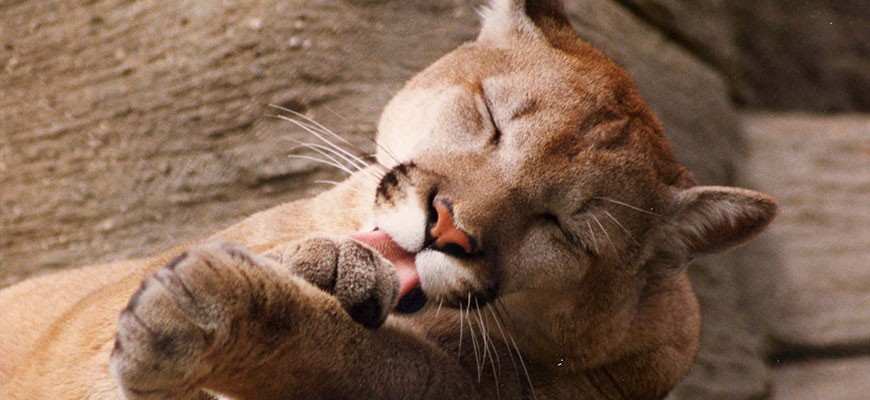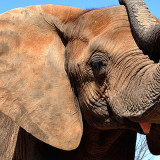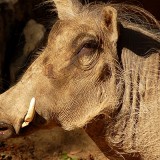RANGE
Originally found in southern Canada, through the United States, and south throughout South America to Patagonia. It is still common from the Rocky Mountains westward, along the Mexican border in Texas, in southern Florida, and possibly from central Maine into Nova Scotia and New Brunswick.
HABITAT
Pumas use a wide variety of habitats including montane coniferous forests, lowland tropical forest, grassland, dry brush country, and swamps. Dense vegetation, caves, and rocky crevices provide shelter.
SIZE
Length: 7–9 feet (including tail)
Tail: 2–3 feet
Weight: 80–200 lbs.
REPRODUCTION
- The female gives birth in a den located in a rock crevice or hollow log.
- They begin breeding at three years of age and can mate during any season with peaks in April and May.
- Typical litters of 1–6 kittens are born after a gestation period of 82–98 days.
- Kittens begin eating meat at 6 weeks of age but continue to suckle until 12 weeks.
DIET
Wild: Pumas are solitary hunters that feed primarily on white-tailed deer, mule deer, elk, moose, but will also eat smaller game such as opossums, rabbits, mice, squirrels, beaver, porcupine, skunk, and even insects if food supplies are limited.
Zoo: Feline diet and bones or horsetails.
BEHAVIOR
- Pumas are solitary and nocturnal. They require a large territory. Home range size may be from 15–24 square miles.
- To avoid close contact with others, a puma will leave scratch and scent marks.
- After killing a large animal the puma may cover it’s prey with leaves and other debris after the initial feeding then come back later to finish.
- They are skilled hunters with excellent eyesight and hearing. They run swiftly, are agile climbers, and can even swim. Rather than simply chasing after their food, cougars prefer to stalk their prey at close range, using the element of surprise.
POINTS OF INTEREST
- Also known as Mountain Lion, Cougar, Panther, Mexican lion, mountain screamer, and catamount.
- Cougars have the most extensive geographic range of any terrestrial mammal in the western hemisphere. They ranged from coast to coast in North America, and from southern Argentina and Chile to southeastern Alaska.
STATUS
Endangered
REFERENCES





